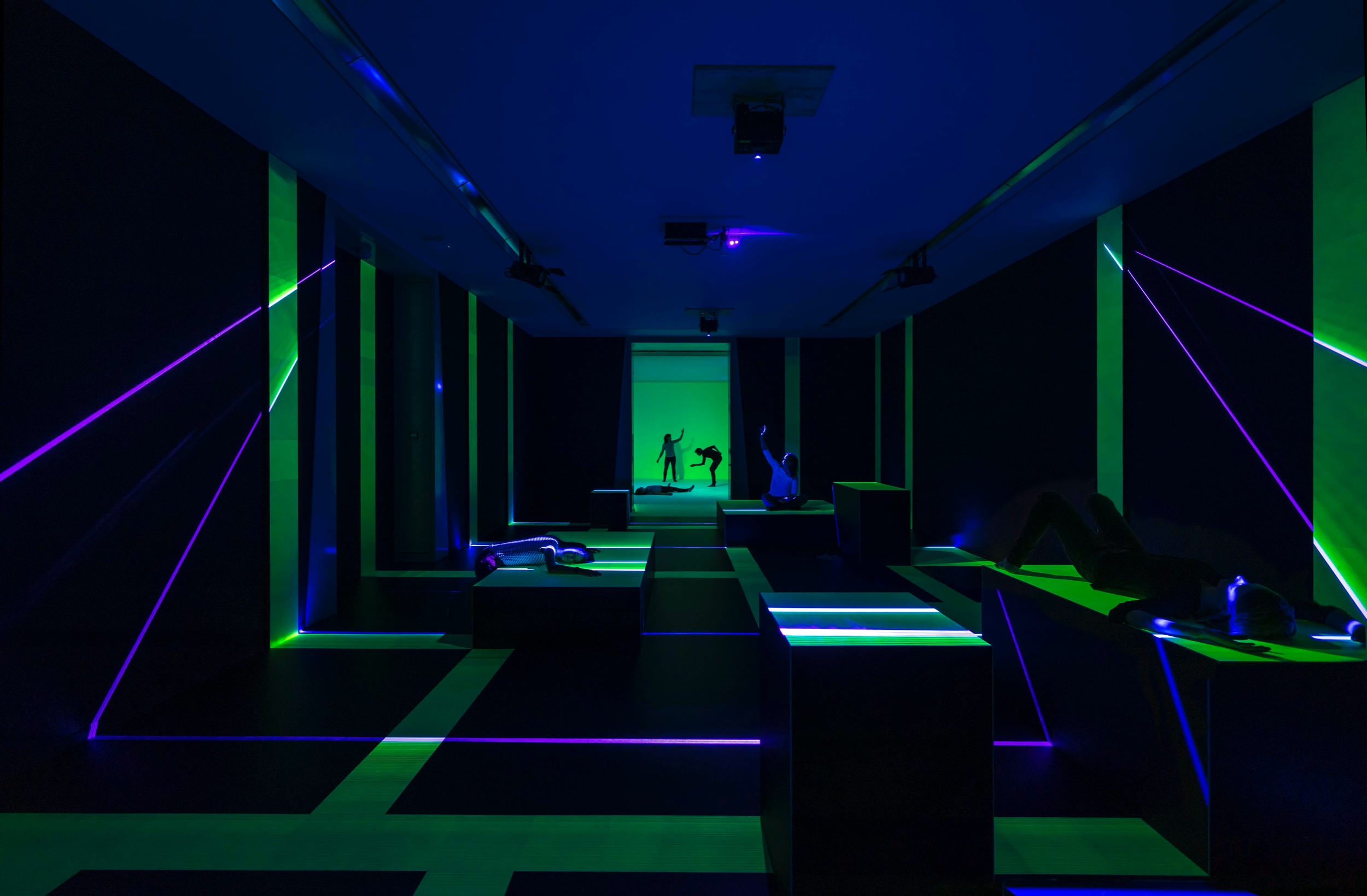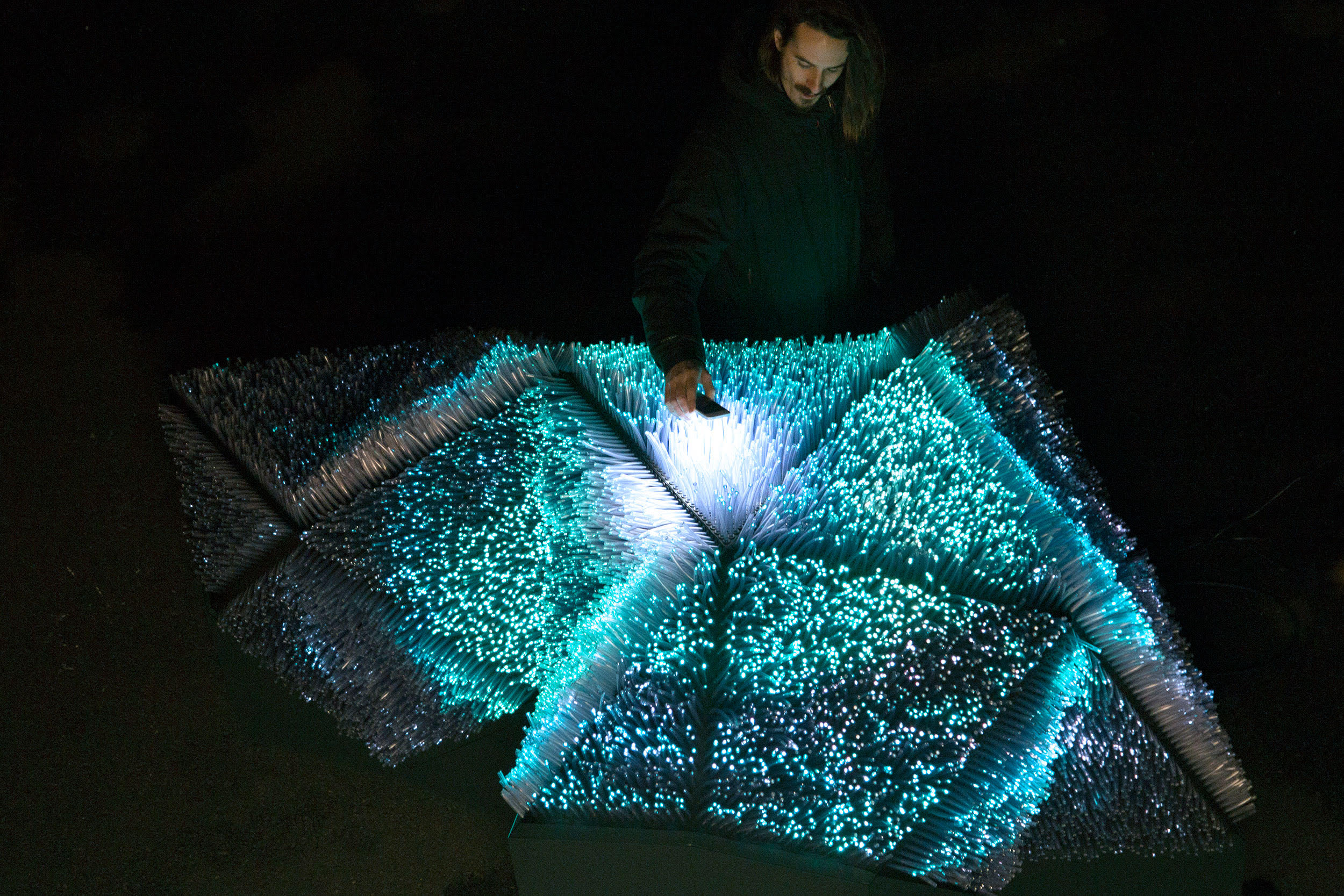You Can Touch This: What Interactive Art Can Do
Viewers are vital for interactive art — they make it complete. These installations react to human presence, voices, touches, and even emotions with light, sound, and motion. Artists suggest new forms of interaction with objects. Today’s household appliances, such as a new fridge
LG DoorCooling+ look more like art, which you can interact with even while being away.
Viewers as authors and exhibits
Last year, Groninger Museum visitors could draw on the floor with light or roll around in fluorescent dust. Unlike typical museum exhibitions, which ask visitors to keep a respectful distance, the immersive Presence welcomed them to get in.






Daan Roosegaarde’s installations encourage the viewers to realize their actual presence in the museum. By moving their bodies, they can shape the way the exhibition looks. Several rooms were equipped with light-sensitive surfaces — people could lie on the floor and touch the exhibits to impact the results.
A blue strip of light “scans” the first room — wherever people touched the surfaces, their shadow will appear. In the second room, a random flash of light “takes pictures” of the visitors’ silhouettes on the walls. The third room looks like a sea of glowing plankton: the floor is covered with fluorescent dust, and people can lie down and fool around. The fourth room is full of shining spheres: visitors can leave their marks by touching them. In the last room, transparent spheres lie on the floor — if you touch one of them, it will roll down and leave a glowing track behind. Visitors can sit on the floor and use a sphere as a drawing medium.
The marks left by visitors fade away quickly so that a new group can start it all over again. In his article, Roosegaarde calls his art a techno-poetry and says that it helps him to think about climate change and people’s impact on the planet.
The Roosegaarde studio has also created an outside game installation Marbles which is a set of glowing objects that change colors and make sounds in response to human touch. The installation transforms public spaces into an interactive landscape of play and enhances social interactions. Marbles add their unique touch to a small square in the Netherlands city of Almere since 2012.

Photo: Peter Tahl / Daan Roosegaarde, Studio Roosegaarde
Video: Daan Roosegaarde, Studio Roosegaarde
Share light
The Light Pollination seems prosaic at first glance — just a small, dimly lit sculpture. But once you shine light onto it — for example, a flashlight on your mobile phone — it responds with bursts of illumination.

Photo: Amandine Alessandra / Universal Assembly Unit
Video: Dezeen
Developed by Universal Assembly Unit, the sculpture features around 20, 000 fiber optic tubes, each having an individual point of LED light and a sensor. The object encourages viewers to “communicate” with artificial light like with a living creature. Presented at the London festival several years ago, the sculpture gives us a chance to imagine what future public infrastructure and lighting might look like.
Mirror, mirror on the wall
Last year, one had a chance to “play” with lighting in Alexandria, VA. The installation Mirror Mirror, presented an opened circle, 2 meters high and 7 meters in diameter. People could walk inside and around the sculpture, which “walls” resemble mirrors from the outside and colored glass — from the inside
LED fixtures in every vertical component of the circle respond to the sound of the voice and start illuminating. At the same time, the front-facing panels turn from mirrored to transparent, while inside-facing panels remain mirrored, creating a never-ending colorful reflection and forest of light. The Mirror, Mirro designers from the New York SOFTLab studio used the Fresnel lens technology, which was invented in the 19th century and used for the Jones Point Lighthouse.

Photo: Alan Tansey / SOFTLab
Video: SOFTLab
Similar technology is used in an LG fridge and called InstaView Door-in-Door. When you knock on the glass, it responds by becoming transparent, and you don’t have to open the door to check if there is any cheese left for lunch.
Create your own music
The JEM installation in Brisbane (Australia) allows passers-by to make their own remix, even if they’ve never done that before. All you have to do is walk inside of a “cage” with LED lights and start moving around — electronic music will match your rhythm.
To change the musical tone, you would need to move deeper inside the installation. Or you can simply sit on a plush pod or swing in a hammock and watch the lights and music change. Created by the Australian studio Eness, the installation is meant to encourage people to explore the new city district.
Video: Eness
…or a star
Interaction doesn’t only happen between people and objects. The Infinite Crystal Universe is an illuminated immersive sculpture developed by teamLab. By using their smartphones, people can choose elements (a star, a planet, or an abstract form) and swipe them off the screen. A second later, they will be “reborn” as 3D objects, created with LED lights. The sculpture looks different for every visitor. What remains the same is a never-ending cosmic space. The universe is now available in Macao and Tokyo.

Photo: teamLab / Pace Gallery
teamLab, The Infinite Crystal Universe, 2018, Interactive Installation of Light Sculpture, LED, Endless
Using smartphones to interact with objects becomes our daily routine. The LG ThinQ app helps manage your fridge: turning on the quick defrosting mode to meet unexpected guests, activating the power saving mode from the other side of the world, or generally checking in on the device.
The future is interactive — we’re moving from art and aesthetics to day-to-day use of interaction in interiors, architecture, and public spaces. And modern appliances help to bring the future right to your home.
Video: Daan Roosegaarde, Studio Roosegaarde






